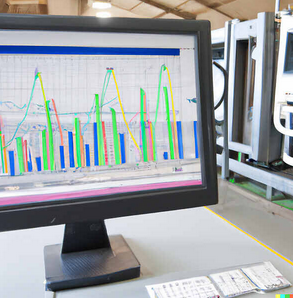It's no secret that demand forecasting is key for businesses to remain competitive. To make sure optimal performance, companies must manage to anticipate customer demand and plan accordingly. Among the most truly effective ways to get this done is through demand forecasting. By using data-driven insights, businesses can better understand customer needs and develop strategies for improving overall efficiency inside their supply chains. Let's take a look at how demand forecasting might help optimize supply chains.

What Is Demand Forecasting ?
Demand forecasting is the process of predicting future customer demands predicated on historical and current sales data. The goal is by using this data to produce accurate projections of future orders and plan accordingly. This helps businesses decide which products or services will soon be in highest demand and when they need to expect them to reach or leave their warehouses. Doing so allows them to regulate inventory levels and production schedules as needed, ultimately reducing costs while still meeting customers' expectations.
The Benefits of Demand Forecasting
Using demand forecasting has several advantages, including ensuring product availability when customers require it, increasing operational efficiency through better inventory management, reducing lead times by anticipating customer needs ahead of time, and minimizing the risk of stockouts because of overstocking or understocking items. Additionally, it can help companies make more informed decisions about pricing strategies and promotional campaigns since they'll have greater insight into consumer preferences.
How Companies Can Use Demand Forecasting
In regards to optimizing their supply chains using demand forecasting , there are several steps companies usually takes: first, gather all relevant data about past sales; second, analyze that data for trends; third, build a style based on those trends; fourth, validate the model with real-world scenarios; fifth, implement the model to the company's operations; sixth, regularly review performance metrics against the model; seventh, adjust as needed centered on new information or changes available in the market; eighth, measure performance against goals set before implementing the model; ninth keep an eye on any changes built to the model and review these changes periodically; tenth use technology such as AI or machine learning algorithms to help refine models over time.

Conclusion:
By utilizing demand forecasting techniques companies can gain valuable insights into consumer behavior which will then be utilized to optimize their supply chain operations for maximum efficiency and cost savings. By gathering relevant sales data from past transactions and analyzing it for trends an organization can build an accurate picture of what customers will likely need in future transactions and plan accordingly. Additionally by incorporating technologies such as for example AI and machine learning algorithms into the procedure businesses can further refine their models over time ensuring they remain up-to-date with changing market conditions while staying before competition when it comes to supply chain optimization efficiencies. Overall demand forecasting is an important tool for businesses looking to remain competitive in the present ever changing markets.
